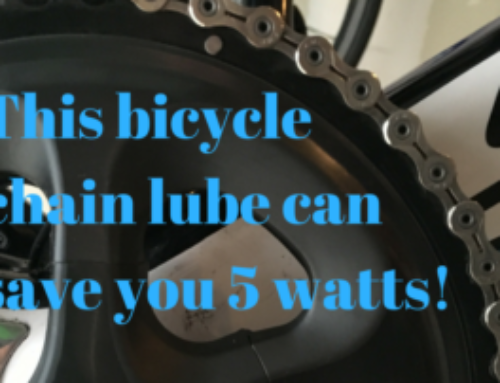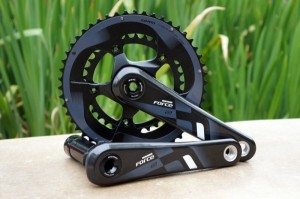 [dc]C[/dc]ampy started the trend a few years back. Shimano jumped on board with Dura Ace 9000. Now SRAM is following suit with the release of their two new group sets, dubbed "Force 22" and "Red 22." Obviously the 22 in the name refers to the total number of gears available, and also obvious is the official release of the Red hydraulic brake offerings that have been teased for months.
[dc]C[/dc]ampy started the trend a few years back. Shimano jumped on board with Dura Ace 9000. Now SRAM is following suit with the release of their two new group sets, dubbed "Force 22" and "Red 22." Obviously the 22 in the name refers to the total number of gears available, and also obvious is the official release of the Red hydraulic brake offerings that have been teased for months.
What is less obvious are the changes to the existing Red group and the changes to the Force group.
After the jump, we'll take a quick look at those changes.
Universal Changes
Yaw is now the derailleur standard between the top groups, and the geometry and cage width has been tweaked for both the 22 groups. Chainring spiders are the same as the 10 speed Red, so 11 speed chainrings are compatible. The rear derailleurs have been tweaked a little bit to afford crisper shifting. The lever throw is reportedly the same as the 10 speed Red group. The shapes of the chainring ramps, pins and teeth have been altered to provide crisper shifting as well. The side plates of the chains are thinner as well, making for a slightly narrower chain.
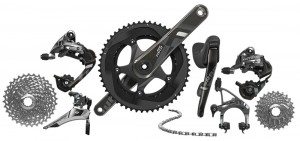
Force 22
Interestingly, the biggest news is the introduction of the Force 22 group, with more changes than that which comes to the Red group. The shifters take on the Red shape, with full carbon brake and shift lever blades. There's no word on Zero Loss for the rear, but history would suggest that it will be there. The brakes are essentially unchanged, save for a new pad compound, so no surprises there. As stated, the front derailleur takes on the Yaw configuration, and gets the chain spotter as well as going on a diet, losing about 18 grams. The rear derailleur gets Aero Glide pulleys to quiet it down, and receives a similar visual treatment to Red. Along with Red 22, the system as a whole will utilize the "True 22" concept: no trimming necessary to use all 22 gears, whether large/large or small/small.
The biggest change, aside from the shifters and 11 speeds is the crankset. Gone is the two piece design, replaced by a S975ish design with a removeable spider. It is modeled after the Exogram Red Quarq crank, which probably means there will be a Force Quarq coming soon. This is a radical departure from the molded spider of the Red Exogram, and it allows for shorter crank lengths to be offered, as well as allowing the user to swap between compact and standard spiders if they wish. The hidden bolt chainring configuration does translate over from Red, which means that some aftermarket chainrings may need a little modification to fit onto the new crank.
It should be noted that the True 22 groups, Force and Red, are completely interchangeable in terms of parts. So in many cases, we may see a bike with hydraulic brakes/levers put on an otherwise all Force 22 configuration. It also means that when a part brakes, such as in a crash, a cheap(er) replacement will always be available from the Force line, which is a welcome change.
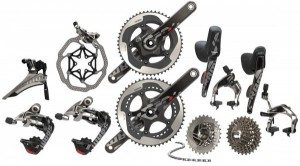 Red 22
Red 22
As noted previously, in addition to 11 cogs, hydraulic braking is the name of the game with Red 22. The reservoir design is different from SRAM's Taperbore design found on their mountain bike line, and is designed in such a way that the bleed port is essentially independent of the fluid path from the lever to the caliper. In theory, this should allow for perfect function even if there happens to be a little bit of air in the system.
In terms of looks, the levers appear to be larger, with about a 1 cm taller, squared off profile instead of the smooth, almost "hooked" profile we're used to seeing. And that's the only real esthetic change made to the entire group: the rest of the parts are essentially tweaked versions of the 10 speed model.
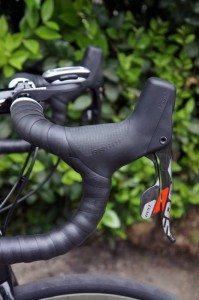 So hydraulic brakes aside, the only changes are: the 11 cogs out back, new brake pad compound for the mechanical brakes, slight tweaking of the derailleurs to work better with the 11 speed cog set, a new chain profile (as noted above), hollow crank arms for the Red Quarq and the addition of a Wi Fli rear derailleur in Red trimmings.
So hydraulic brakes aside, the only changes are: the 11 cogs out back, new brake pad compound for the mechanical brakes, slight tweaking of the derailleurs to work better with the 11 speed cog set, a new chain profile (as noted above), hollow crank arms for the Red Quarq and the addition of a Wi Fli rear derailleur in Red trimmings.
SRAM also says they will be offering 10 speed hydraulic levers under the R700 nomenclature, so if you're someone who's been drooling for disc brakes, you should certainly be able to have them with your current configuration. Brake levers and calipers are reportedly going to be sold together, which should put a lot of consumer's minds at east about having to assemble hydraulic fluid lines in their garage. At this point, it hasn't been said if the hydrauulic systems will be based on DOT4/5 brake fluid (as used in most vehicles) or if they will follow suit and switch to a mineral oil fluid like Shimano uses.
My Thoughts
My thoughts on disc brakes have been posted before: I really don't see the need for them. Yes, they have some value in cyclocross, but as we saw in the Louisville worlds, they definitely were far from perfect, while the tried and true cantilever setup worked flawlessly. In terms of braking, there has never been a situation where I've said to myself "self, you wish you had those disc brakes, don't you?" Let's face it: Rim braking has been researched to death and we are likely at the pinnacle of rim braking technology. Most of the brakes I've tried have excellent modulation and more than enough braking power, even with the carbon rims that are popular today.
I am intrigued by the prospect of a hydraulic rim brake, however. Coming from mountain bikes, I know how much easier the hydraulic brake is on your forearms, reducing forearm pump on extended descents, so I'd be curious to get my hands on a bike equipped with these hydraulic rim calipers and see how they perform.
11 speed is another interesting thing to chew on. I only upgraded to 10 speed when my 9 speed Dura Ace shifters bit the dust (and that was when I went to SRAM) so I'm in no hurry to go to 11 speeds. On the plus side, most of the cassettes (with the exception of the 11-32 cassettes) are now running a straight block of cogs from 11-17, giving us that 16t cog back, which I do miss at times. Now, the issue I have is that these parts are (supposedly) not compatible with 10 speed hubs, and nor are the 11 speed components interchangeable with their 10 speed counterparts. I'm not in any rush to replace every freehub on every wheelset that I own just so I can gain a cog. Nor am I willing to buy a complete grouppo just to get 11 speeds (since the front derailleur, chainrings, cogs, and shifters would be necessary.)
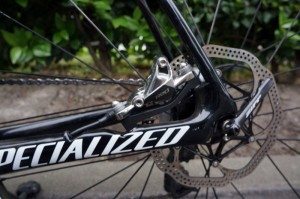 While I believe 11 speed is here to stay, I'm not sure disc brakes are. I believe they will be a niche market (or a market that the companies spend a lot of money and time trying to convince us that we need) that will remain for quite a few years but never become dominant.
While I believe 11 speed is here to stay, I'm not sure disc brakes are. I believe they will be a niche market (or a market that the companies spend a lot of money and time trying to convince us that we need) that will remain for quite a few years but never become dominant.
And finally, there has been no confirmation nor denial from SRAM that they have a hydraulic shifting system in the works. Again, like electronic shifting, I'm sure it would be interesting, but there's absolutely nothing wrong with cables and housing, and electronic will remain a niche market.
Thoughts?
Thanks to Bikerumor for the photos and some of the information.





